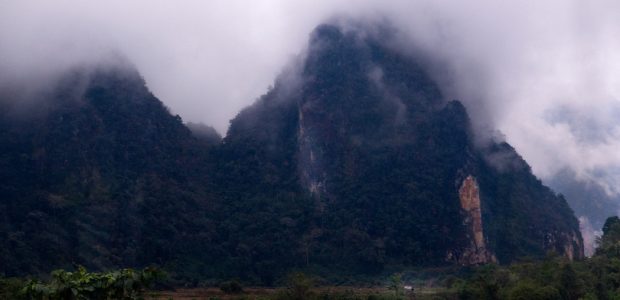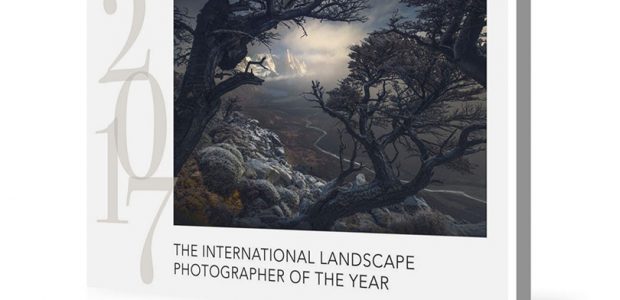


An ambitious camera or lens is one that allows, in some way, the making of images that could not have been made before, or that would have been much harder to make before. Most cameras, even if they’re a bit more convenient or have different combinations of features, don’t offer anything really new. There are an awful lot of very nice 24-30 MP cameras out there that shoot at around 8 fps and feature in-body image stabilization. A really good combination for most types of photography – and a few more video modes here or a film simulation there doesn’t really change the fundamental suitability for most types of imaging.
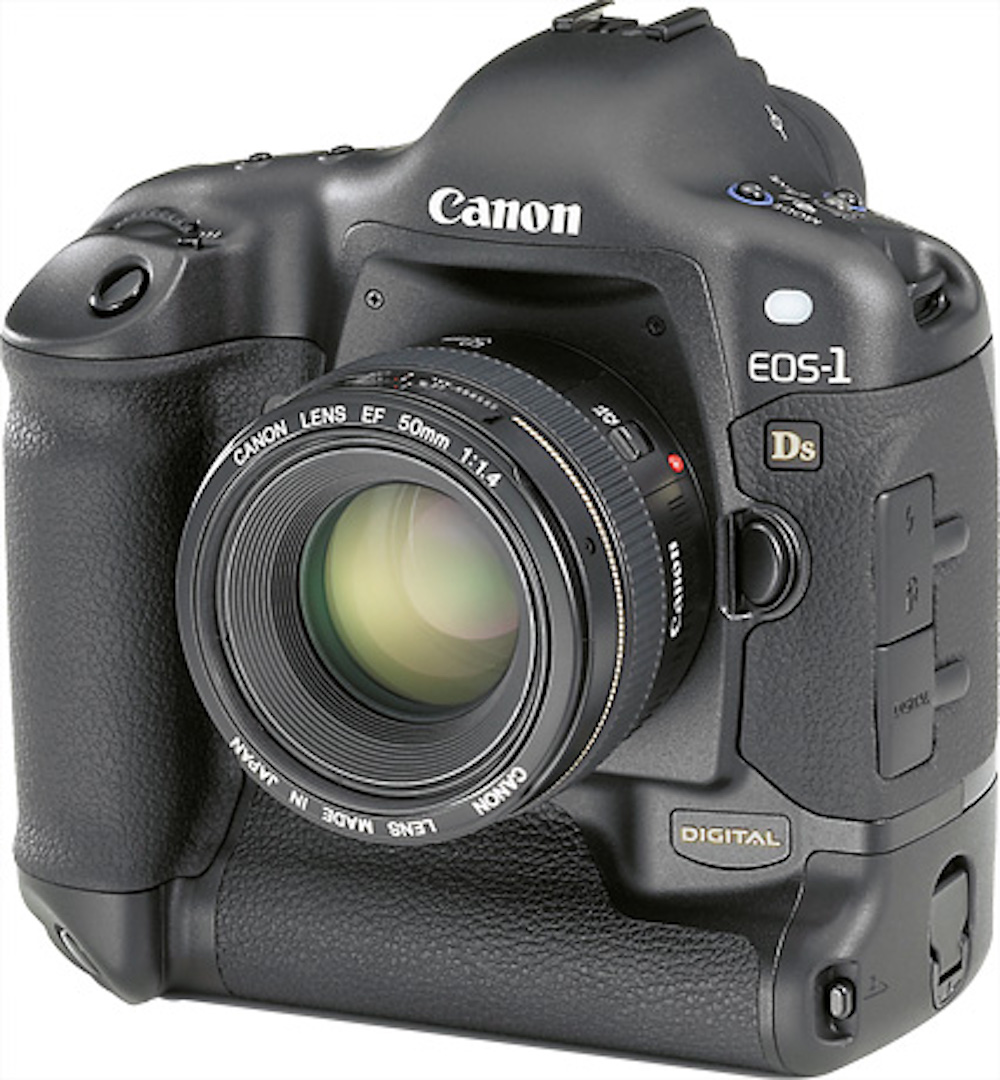
A more ambitious camera is one that breaks from that formula, or from whatever the formula of the day is (the EOS-1Ds was radically ambitious in its time as an 11+ MP full-framer in a world of 4-6 MP cropped cameras). Sometimes the break is extremely high resolution, but it can also be speed or any other combination of features that allows the capture of an image that would have been hard to get another way. One of the most ambitious cameras I’ve handled (unfortunately a design failure – it didn’t succeed in its ambitions) was Nikon’s little Nikon 1 AW1. It was the only waterproof interchangeable lens digital camera ever made. Unfortunately, it also had a terrible 1” sensor, and, inexplicably, no viewfinder. For a camera meant to be used outdoors, only a rear LCD that was illegible in sunlight was a strange choice! Lots of strange choices, but taking durability out of the equation was very ambitious. The GFX 100 and 100S are ambitious due to extremely high image quality – quality at this level simply wasn’t available to the vast majority even of very serious photographers prior to the existence of the 100 MP GF mount cameras.

Yes, there were and are backs in that range and even above from Phase One and Hasselblad, there were scanning backs from BetterLight, and there was also 8×10” film.

Looking up – Redwoods. This would be hard to get with 8×10” or a scanning back. There are very few lenses this wide for large format (the 23mm GF is roughly equivalent to a 50mm that covers 4×5” or a 100mm that covers 8×10” – both are very rare if not nonexistent). Also try setting up a kitelike view camera tipped like this.
There are other ways to get the image that the 100 MP GFX cameras deliver, but they are all much more difficult to use. All the other options are either incredibly expensive, or they have very high per-image costs (an 8×10” setup can be relatively affordable used, but film and processing are extremely expensive, with color film in particular ranging well over $20 per image with processing), or they are limited to a few types of images by scanning technology. The GFX 100S in particular is a surprisingly easy camera to use, with effective autofocus, image stabilization and one of the best exposure meters I have used. I’ve handed it to non-photographers when I have needed to be in the picture, and they’ve gotten good results.
While the 100 MP GFX cameras are the most ambitious we’ve seen for pure image quality, there are other recent cameras that push the state of the art in other ways. The Sony A1 combines speed and image quality in a new way. No previous pixel monster has been a particularly fast camera from a sports and action perspective, at least not without drawbacks. Many high-resolution cameras have “gotchas” where turning on certain high-quality modes reduces speed, sometimes to only a couple of frames per second or less. Even those that don’t have serious slowdowns tend to be no faster than $500-$1000 cameras. No really fast camera had image quality better than the average $1000 camera – the other $5000 in a D6 or an EOS-1Dx mk III, and the other $3000 in an A9 went to speed and build quality – the speed demons are rather standard 20-24 MP cameras except for their frame rates, AF speed and accuracy and indestructibility.
The EOS-R5 was the first camera to begin changing that equation – it is a 45 MP camera (with image quality that puts it solidly in the middle of the 40- 50 MP class). Image quality is not always obvious from pixel count, since Canon’s earlier 5Ds and 5Ds R only lived up to their pixel count in limited circumstances, but from all I’ve read, the R5 delivers. It is also one of the fastest cameras around, with a wide range of still and video modes that take advantage of extremely fast internal processing to do everything from 8K video to 20 frame per second stills (under certain circumstances) to really fast autofocus. Unfortunately, it is also well known as a picky camera – it overheats easily in the higher end video modes, and any frame rate above 8 fps comes with limitations- at 12 fps, the viewfinder blacks out, showing only the last image taken, not what’s happening now. At the full speed of 20 fps, it’s electronic shutter only, and rolling shutter and banding effects can be pronounced. If you can live with its limitations, the R5 offers a unique combination of speed and image quality – or it did until Sony’s A1 came along.
The Sony A1 has a similar feature set, but early reviews promise much less pickiness than the Canon – for significantly more money. I haven’t used either camera personally, (although I’ve been trying to get ahold of an R5 review sample for a year). I hope to have an A1 around for the goose migration this fall, and perhaps an R5 as well. Many photographers who have used it praise the A1 as the best all-around camera in current production – not the best camera for every image, but the best camera if you know you’ll be asked to produce a professional-quality photograph, but you don’t know what the subject is. If you KNOW it’s landscape or architecture , grab the GFX 100 or 100S. If you know you’re shooting motor racing, there are still reasons to use a D6 or an EOS 1Dx mk III. If you know you’re doing video, some Panasonics offer things the A1 doesn’t (at the cost of 8K), and, if you’ve got the crew for it, a higher-end Blackmagic, an ARRI or a RED can do quite a bit better. If you don’t know which of the three you’re doing, though, the real ambition of the A1 is to be an excellent choice for any of the three (or anything else).
Nikon’s Z9 is likely to be a similarly ambitious camera to the A1, a jack of all trades with ambitious plans in many of them. The officially confirmed 8K video suggests that resolution and speed both have to be comparable to the A1 in order to get 8K to work. It may be missing some features (will it have Sony’s very low-latency electronic shutter)? It will probably have some twists of its own – maybe a “Nikonized” sensor that subtly outperforms the A1? That’s a Nikon favorite – an almost-standard Sony sensor with a little performance tweak or two (see D850/Z7 sensor vs. A7r II/III sensor, or go back in time to the D3x against the a900). In both cases, the sensors are closely related, but the Nikon has a little something extra. The Z9 will be a different size and shape from the A1, with a built- in vertical grip, and (of course), the lens selections will be different – the Nikon gives up some of Sony’s native lens selection (especially at the long end) for compatibility with 60 years of Nikon DSLR glass.
Interestingly, Canon’s refusal to say anything about video specs in the upcoming R3 leads me to suspect it’s a less ambitious camera in at least some ways than many are hoping for. If it had 8K, I suspect (without confirmation) that Canon would have mentioned it by now, especially with all the questions that have been raised. The most logical reason the R3 would be missing 8K is that it doesn’t have the resolution for it – it’s likely to be a classic “speed” camera with decent but not exceptional resolution, rather than a camera that does it all. Canon loves nonstandard video modes in the 6K range, and a 24-30 MP R3 would fit that perfectly. It would also fit well with some high-quality oversampled 4K modes. Reports from the Olympics strongly suggest that the EOS-R3 is a 24 MP camera, although this is not officially confirmed by Canon.
An R3 in the 24-30 MP range would give up some image-quality ambitions, both to the A1 and Z9 and to less expensive models in Canon’s own line, mainly the EOS-R5. What it would gain in return (if Canon gets it right) is reliability. The R5 is notoriously picky – the R3 needs to be able to shoot all day, in any mode, in any combination of stills and video. The R5 can’t do that, and professional sports photographers need it.
From a pro sports photographers’ viewpoint, the R5 is an overambitious camera – it lets “nice to have” things like high resolution and 8K get in the way of essentials like unlimited record times. The problem Canon faces is that it looks increasingly like the A1, and perhaps the Z9 as well, are going to eliminate those tradeoffs. They are more ambitious designs that try to combine speed and reliability with image quality – and early A1 reviewers, including Thom Hogan, who’s one of the best around (and is a new A1 owner), say that Sony has succeeded. Pro sports photographers have long accepted the tradeoff, shooting motor driven Nikon Fs instead of Hasselblad 500 c/m’s, then EOS 1s instead of Contax 645s, then A9s instead of A7r IVs. Sony and perhaps soon Nikon are now saying “ no need to trade – it’s expensive, but our best image quality can be had at 20 fps all day long”. If the R3 is clearly behind the R5 in detail, as it appears nearly certain to be, Canon is saying “the tradeoff is still there”, while their competitors are saying “no it’s not”.
Will that be acceptable to the R3’s target market? Most sports and other high-speed imagery is now used online, where the resolution can’t possibly matter. 8K video is nearly impossible to share on any platform, and, even if you could, the viewers don’t have 8K screens. A lot of sports photos are printed in newspapers and magazines (as much as those still exist) where the print process itself reduces resolution. In all of those cases, the tradeoff doesn’t matter. On the other hand, many sports photographers are now freelance, and they may sell prints, or they may work for a team who want to use the images big in the stadium. Wildlife photographers also like speedy cameras, and many of them sell prints, making a higher-resolution camera attractive.
Not all cameras need to be ambitious – pushing the state of the art is expensive, and it often comes with tradeoffs in other areas. There is also a real need for good, well-balanced cameras and lenses that do a lot well for a reasonable price. Right now, the sweet spot for a lot of uses is 24-30 MP, APS-C or full-frame, with lenses ranging from good compact, affordable choices to the state of the art and decent 4K video. Other than the video, we first saw this set of capabilities in the eye-wateringly expensive Nikon D3x way back in 2008-2009.
Ideally, there would be an entry-level model or several around those specifications that a serious beginning photographer can use to get into the system for well under $1000, then a wide range of mid-range choices in bodies and lenses, and finally some options for high speed, superb video and high resolution to grow into. There need to be solid beginner options, a capable midrange, and an ambitious high end with choices. No system has quite achieved that ideal – they’re all missing something important at some level. There are really six companies or alliances that can be said to be trying… Canon, Sony, Nikon, Fujifilm and the L-mount and Micro 4/3 alliances. Some of the players offer more than one system, either in a confused manner or with a clearer rationale. Anything beyond the four companies and two alliances is too niche to count (Pentax DSLRs, Hasselblad, Leica M, etc).
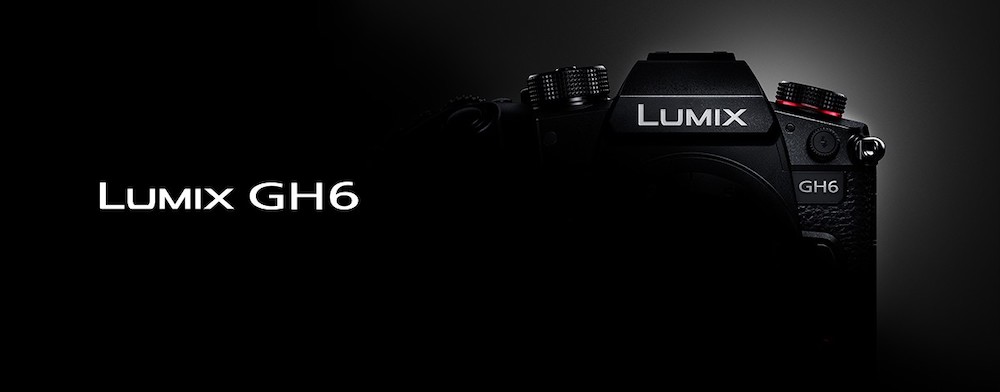
In my opinion, the first thing to dismiss is Micro 4/3, although with the caveat of “not so fast if the GH6 sensor is a huge improvement”. They need a new sensor to be competitive in any way, since their best sensor doesn’t meet the entry-level standard of “good 24-30 MP”. A few years ago, the video capabilities of the Panasonic GH series and the “hand of God” image stabilization, durability and speed of some of the Olympus bodies were enough to overlook the Same Old Sensor for certain applications – but the competition keeps getting better at those things, and the Same Old Sensor keeps getting older while not getting any bigger. In particular, the X-T4 makes anything Micro 4/3 extremely hard to justify, unless you’re just adding a bit to a system you like (and, even then, it’s worth thinking what the path out is if a new sensor doesn’t arrive).
The reason I’m so critical of Micro 4/3 isn’t because I hate the system – far from it… I shot a lot of Micro 4/3 some years back, and thought some of the innovations were excellent, especially around video and stabilization. I still remember my first time using a modern Olympus stabilizer back when most others were for saving shots right around the handholding limit – while everyone else was stabilizing around 1/60 second, the Olympus said “go ahead, shoot at 1/4 second, I’ve got you”. Now, my medium format camera has an appreciable hit rate at 1/8 second… Even where Micro 4/3 used to excel, they’ve stagnated – and the glaring problem of the Same Old Sensor just sits there year after year. Will the new sensor in the GH6 save the system, or will it be a slight update of the Same Old Sensor?
The second thing to dismiss (with many caveats and quite a bit of sadness) is any DSLR including Canon and Nikon. For the first time in a looking forward article like this, I’m actually giving ALL DSLRs a Not Recommended unless you’re adding to a well-established system. Don’t start a DSLR system now, despite what may seem to be a price or feature advantage over mirrorless. The manufacturers have accelerated the move away from DSLRs, more quickly than I would have predicted. First Canon, and now Nikon as well, seem to have lost interest in the past year, discontinuing bodies and lenses at a rapid rate. We haven’t seen a DSLR body or lens introduction by either major manufacturer in over 18 months, and the last first-party lens releases other than exotic telephotos were way back in 2017.
Apart from a few big telephotos, the adapters to put your Canon or Nikon lenses on a mirrorless body are more recent than any lens you might use them with. The same-brand adapters are excellent, so your lenses (except early autofocus Nikkors) carry forward to your manufacturer’s mirrorless system. I’ve advocated before for a Pentax to Sony adapter made by Pentax, Sony or a collaboration…. If you have Minolta (or Sony A) lenses, Sony is making good E-mount adapters – there are quite a few of them, and not all that much rhyme or reason to which one you might want, but they work well.
Unfortunately, Nikon mirrorless lacks a true entry-level camera (with the Z50 positioned a little above the entry level), and Canon has them, but they use the dead-end M mount, not the desirable RF mount. The only case where it’s worth buying a DSLR body is if you already have a great system from that brand, and you feel you’re unlikely to move to mirrorless… If you’ve been shooting Nikon (or Canon) SLRs for 40 years, have wonderful lenses and want to add a D850 (or a 5D IV) that may well make sense. Similarly, if you have a Canon or Nikon system you love and want to add a lens, that could make even more sense – if you do decide to go mirrorless, any new lens you buy today will work very well on an adapter to your brand’s mirrorless line.
Both Canon and Nikon are still trying to sell Rebels and D3500s, neither of which make much sense. Why would you want to buy into a system that the maker no longer wants to support? If you’re looking at a Rebel or a D3500, that’s probably a new system, not an addition to something built over many years. Since the manufacturers are saying “the future is mirrorless” so loudly, they need to provide an entry to that future.
Nikon is closer than Canon – at least the Z50 uses a reasonable mount. They are saying the future is Z-mount, and so is the Z50. They need to offer a model below the Z50, and to include in-body stabilization on the Z50 and its little sibling, so they are really compatible with the full-frame Z lenses. The FTZ is a great solution for F-mount lenses at the low end. Most Nikkors have been AF-S for a while now, and the kind of photographer switching to a Z50 (or even a Z5) is unlikely to have a cherished old early AF lens or two… The need for an adapter that addresses those lenses is real, but it is more among higher-end users who are looking to use an older 20mm, or a macro lens, or even a pre-AF-S exotic telephoto, on their Z7 II.
Other than lacking a true low end and the image stabilization confusion (all the full-frame bodies are stabilized, but the APS-C Z50 is not) the Z bodies are in decent shape. After getting the Z9 out, Nikon’s next logical challenge is a true entry point (Z30), followed by a D500 replacement (Z70?) and replacements for the Z6 and Z7 models. The recent Z fc checks none of those boxes – it’s a retro Z50 with a few minor improvements (none of which are image stabilization, the one thing the Z50 really lacks).
Canon is in slightly worse shape. They have more than one entry level mirrorless body, and some of them really are entry level (both of which are good things)- the Z50 is slightly to somewhat above the entry level, with the Z fc in a confusing position a tiny bit above the Z50. The problem is that all the entry-level Canons use the wrong lens mount, and there is no adapter to fix it… Until you pay $1000 for an EOS-RP body, everything Canon has to sell uses the dead-end EF-M mount, not the active RF mount. An EF-M camera limits you to a few f6.3 zoom lenses (with one 11-22mm f3.5-5.6 exception), a few oddly spaced primes mostly on the wide end of normal (including an inexplicable 28mm macro lens), and a bunch of cheap manual-focus lenses from Samyang, Rokinon & co. Not exactly the most inspiring collection…
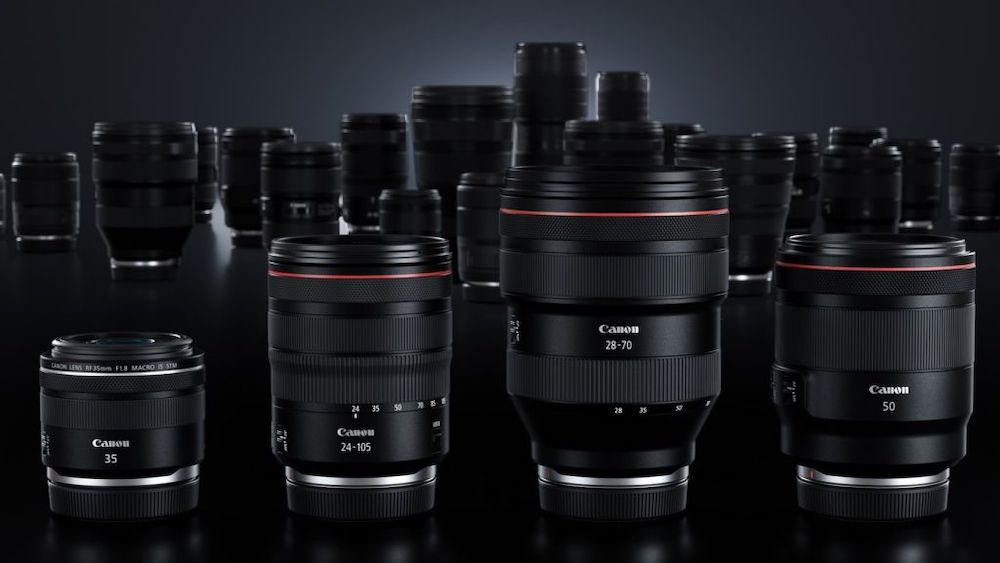
RF, on the other hand, is under active development, and is increasingly offering a full line of lenses. The problem is that, as a full-frame only (so far) mount, it has no easy entry point. The EOS-RP is cheap for a full-frame camera, but expensive as an entry point. Both it and (especially) the original EOS-R are also slightly odd cameras to use – Canon was experimenting with user interface, finally getting it right on the R5 and R6, which have a lot of Canon feel (but an R6 starts at $2499, while an R5 body is $3899)They need entry-level full-frame models somewhere around $1200 and $1800 that are more Canonish than the existing lower end, and they need at least one APS-C model (or full-frame, if they can get it cheap enough) using the RF mount below $1000, if not a couple of them. Canon builds their own sensors, so they may have a better chance than anyone except Sony (who also make sensors, of course) of getting a full-frame body into entry price territory.
L-mount is the other oddity that isn’t right for most people. Sigma’s commitment to L-mount lenses (and a few odd bodies) has helped the situation a lot – the L-mount lens selection has improved, and more and more of them are Sigma’s DG DN lenses – top-end mirrorless specific designs at very reasonable prices. I have really enjoyed every DG DN lens I’ve had through here, especially the DG DN Art models.
It’s increasingly possible to build an L-mount system using nothing but Sigma lenses, avoiding the (often bulky) Panasonics and the (always expensive) Leicas altogether. Adding Panasonic and Leica lenses makes for a fairly complete system, although one with some oddities (including no less than 8 autofocus primes between 40 and 56 mm – lots of people need a normal lens, but who needs 8 of them?). Wouldn’t another long lens, especially a fast prime (only the Sigma 100-400mm Contemporary and the brand-new Sigma 150-600mm Sport exceed 300mm) be more valuable than yet another lens in the 50mm range? Both long zooms are f6.3 at the long end, leaving no option for simultaneously long and fast.
The real problem with L-mount from an availability standpoint is the selection of bodies… There is one body I would define as really mainstream (the $2000 Panasonic S5). There is no high-speed body at all, and the only high-resolution body (except for the odd, viewfinderless, shutterless Sigma fp L) is the Panasonic S1r, which is substantially larger and heavier than a GFX 100S, without any real advantages over the GFX (or over any number of standard high-res cameras). Most of the bodies feature contrast detection AF only, and are notably slower than competitors who use phase detection. Many of the Panasonic and Leica lenses are also similar in size to GFX lenses (or sometimes larger). If you’re toting the S1r, why not carry a GFX 100S instead for twice the resolution, extra dynamic range and overall IQ that can’t be beat?
The real selling point for L-mount is video, but the S1H is looking a bit long in the tooth. It was by far the most capable mirrorless hybrid at its release, but the A1 now has significant advantages – within its recording time limitations, the EOS-R5 does as well. It’s not just the 8K modes that differentiate the Panasonic from the leaders. Oversampled 4K and slow motion modes are at least as important. The S1H offers a greater variety of vectorscopes and other tools to capture high quality video than its competitors, but is missing some of the most difficult to implement recording modes. Making Panasonic’s situation worse, both the Z9 and the EOS-R3 promise to have significant video capabilities – maybe well ahead of the S1H. Panasonic’s professional video gear comes from a different part of the company and (oddly) is not L-mount.
The real question for anybody looking at L-mount now is manufacturer commitment. Sigma will almost certainly keep making (and introducing) lenses – the specs are close enough to E-mount that all the lenses are shared designs and the robust E-mount business will keep Sigma’s L-mount lens business alive. The bigger question is bodies. A system with one nice $2000 body, a 47 MP pixel monster that is larger, heavier and focuses slower than a 102 MP medium format camera, a capable but older video body plus a couple of special-purpose bodies from Sigma and expensive Leicas is not a real system.
L-mount sorely needs a true entry-level body. It could cost around $1000-$1200 if full-frame, but Leica actually makes APS-C L-mount bodies and lenses (believe it or not, L-mount was originally APS-C), opening the possibility that Panasonic (or Sigma) could make a cheaper APS-C body and lenses – both full-frame and APS-C options would be good to have. The S1r needs an update, probably into the S5 body with faster focusing. The S1H needs an update, although there is a very good cooling argument for keeping the video body in the big chassis. Finally, a very ambitious, A1 type body that combines resolution, speed and video would be a good addition (but would require a completely new AF system). The major lens need is above 200mm… Will Panasonic or anyone else put the money in to develop those bodies, even assuming we can count on Sigma for the lenses?
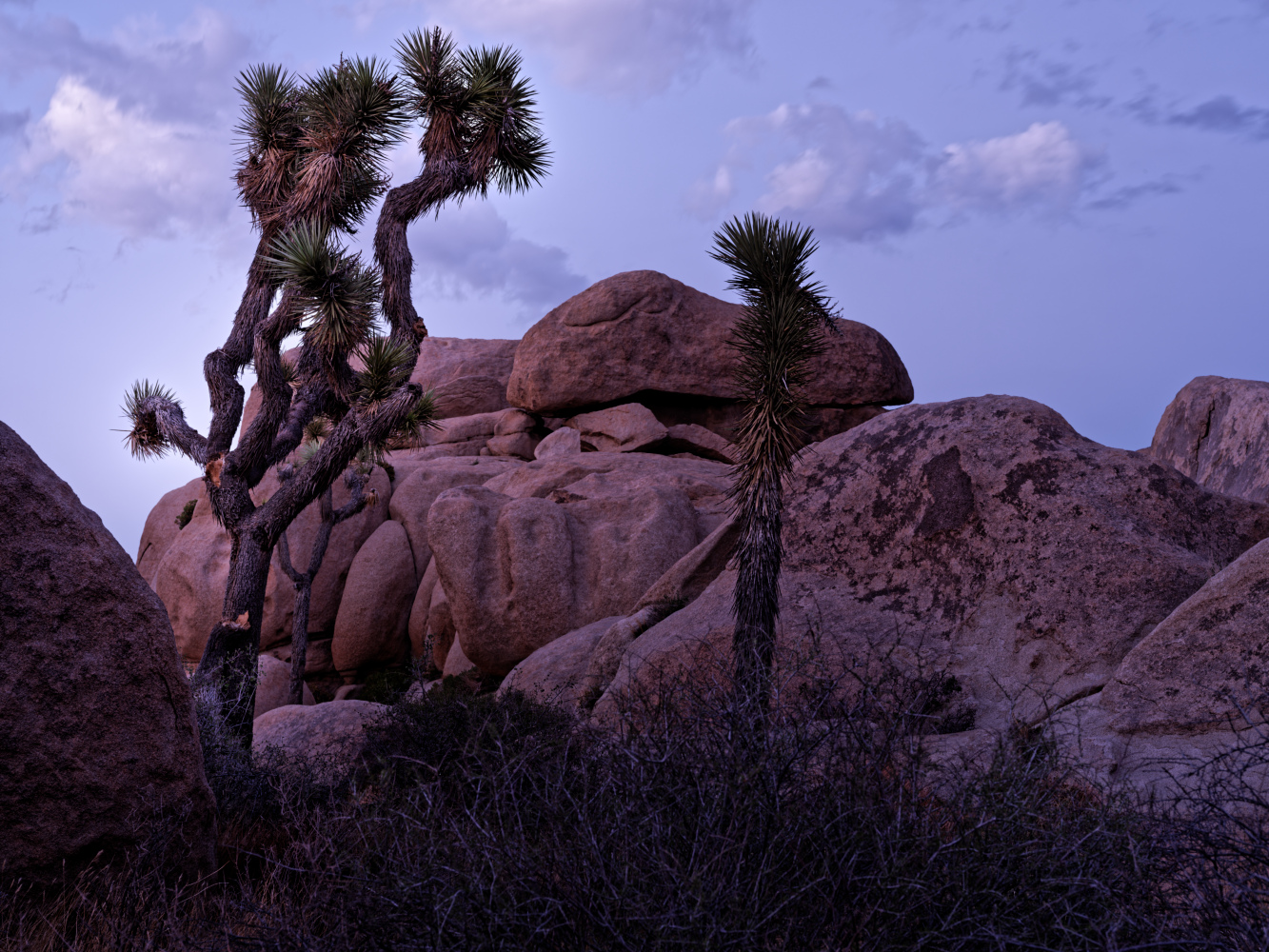

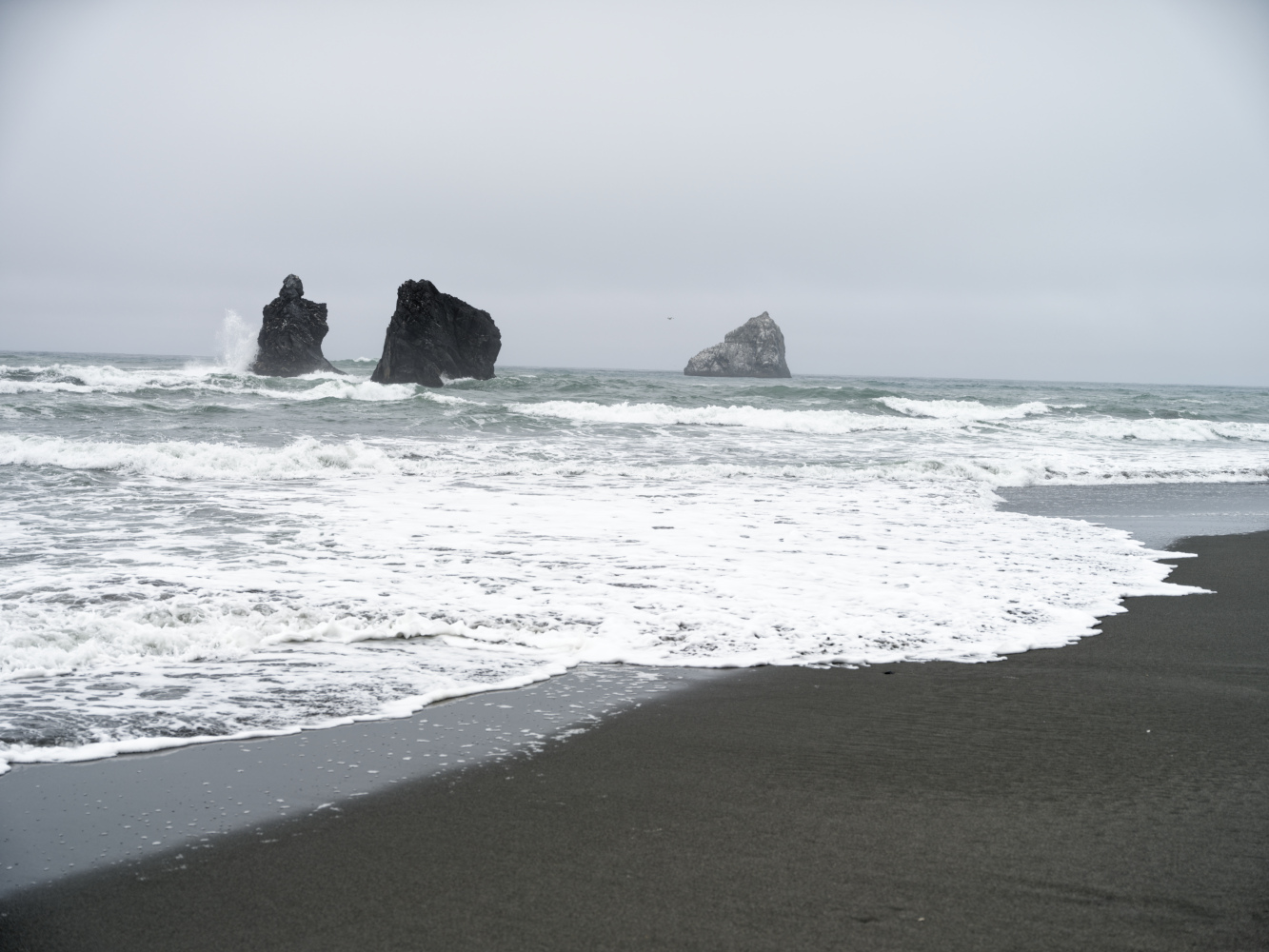
After looking at everything that isn’t (or may not be) viable, we’re left with a familiar foursome who are. Since I last looked at this landscape around what should have been CIPA show time, some months ago, a few things have changed. I know a lot more about the GFX 100S – from some numbers on a spec sheet then, it has become a tool I have traveled thousands of miles with and made thousands of images with now. It lives up to those impressive numbers, and it shows Fujifilm’s commitment to their two system approach. Sony, who had been using three bodies to get everything their system could offer (A7r IV for image quality, A9 for speed, A7S III for video) released a single body that equals or bests each of the three at their strength. The A1 is expensive, but it is incredibly flexible.
That’s the good news – two VERY ambitious bodies, each of which has changed the landscape of professional and artistic photography in an interesting way. Canon and Nikon are each teasing an ambitious body as well, and there are probably some interesting lenses in late development stages (hint, Nikon: couldn’t we see at least ONE of that bunch of telephotos you have on the roadmap)?
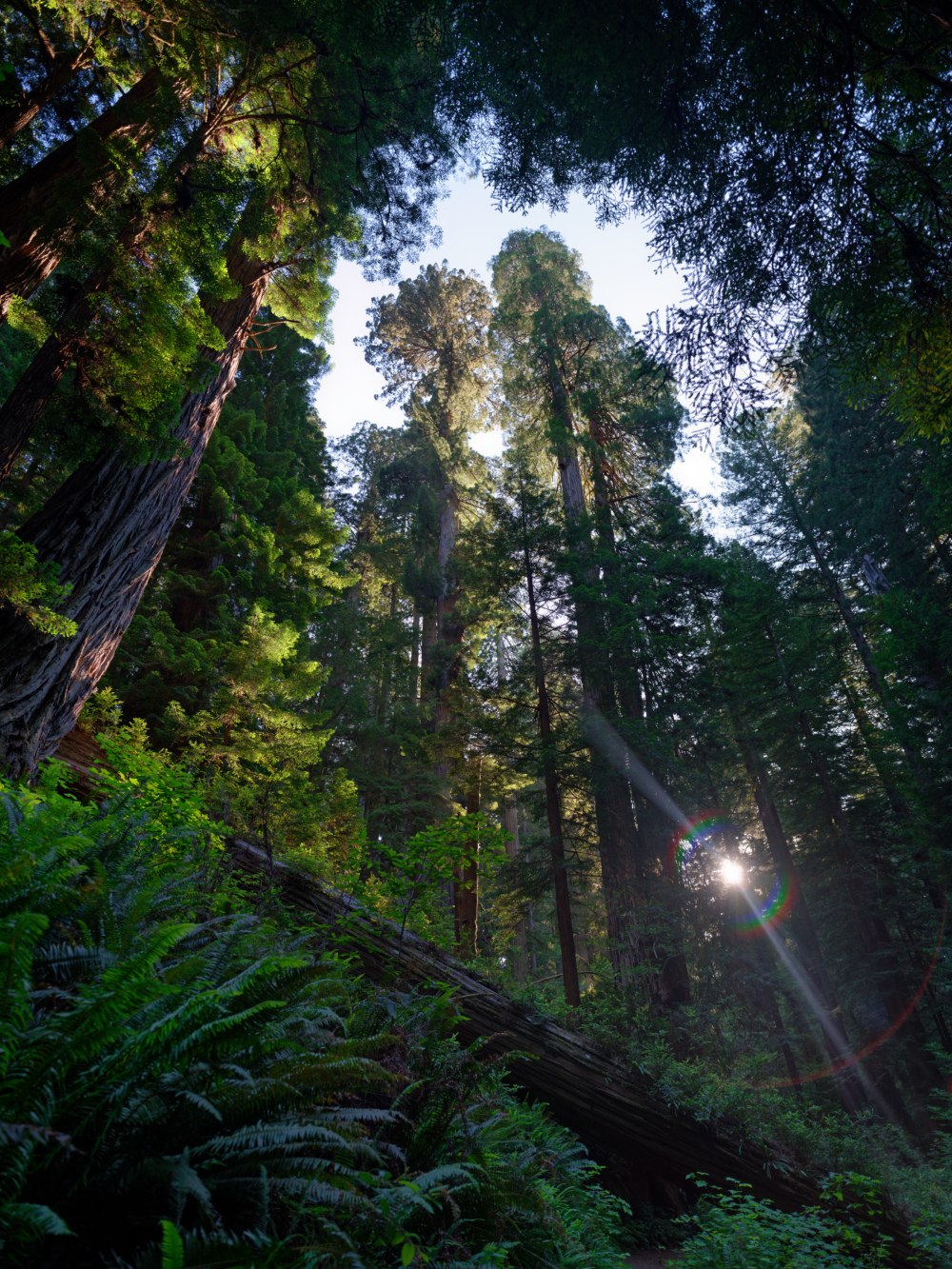
The bad news is that nobody really has the entry level right – everyone except Fujifilm is sending the message that they want you to start in full-frame, yet full-frame doesn’t offer a true entry level price tag. Full-frame is too expensive for beginners and photo students right now, so the manufacturers either need to get the price of entry to full-frame down or pay more attention to APS-C. There isn’t a big difference in image quality between full-frame and APS-C when both are around 24 MP with comparable lenses – maybe a stop of high ISO performance and half a stop of low-ISO dynamic range.
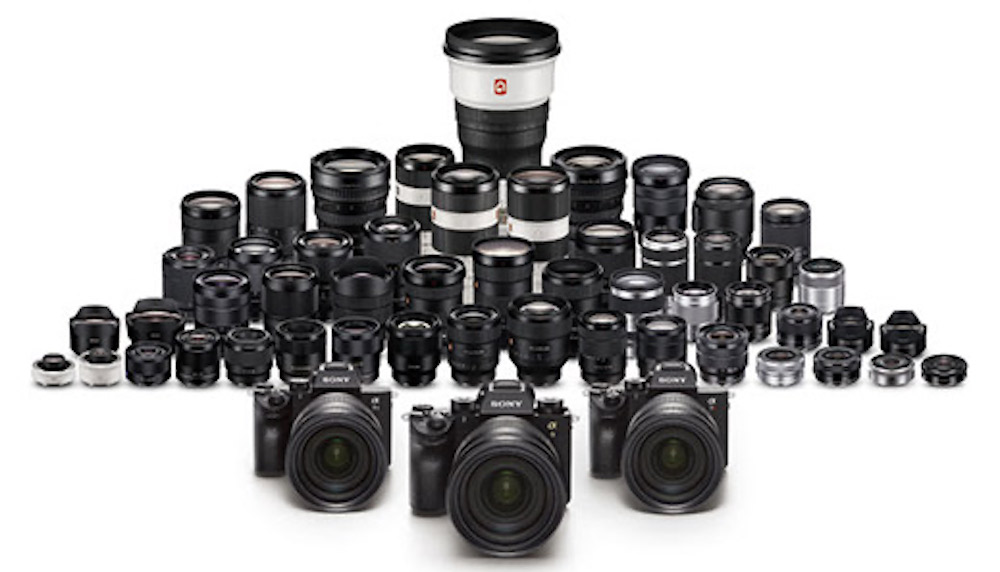
The real advantage to full-frame isn’t that the 24 MP cameras are better – it’s that they are directly compatible with cameras using more specialized sensors (high speed, video, high resolution). If you start with a Sony A7II (an older body, but available for under $1000 with a 28-70mm f3.5-5.6 lens right now – the cheapest way to full-frame), your upgrade options include an A7r II, III or IV for more resolution, an A9 I or II for high speed, an A7S III or one of several dedicated video cameras for video, or an A1 to do everything in one body. None of these options share the A7II sensor, and all use Sony’s huge full-frame lens lineup. If you spend the same $1000 on an APS-C A6400 with a 16-50mm lens, you take a big step back in kit lens performance and lens selection (other than using full-frame lenses and accounting for the crop factor). You also go from seven still cameras to upgrade to down to one – an A6600 that shares your A6400’s image sensor and processing pipeline. Its big feature is image stabilization, which matters mostly if you’re using full-frame lenses (since few Sony APS-C bodies are stabilized, most of the lenses are).
Canon has a nice line of APS-C bodies, but the least interesting possible lens line to go with them, and no transition to the EOS-R system when you outgrow the lousy lenses (you’ll outgrow the lenses while having plenty of life left in the body, and possibly while having a viable body to upgrade to). Nikon has 1 1/2 bodies in APS-C, but only a couple of dedicated lenses, and, while full-frame Z Nikkors will fit (and Nikon has a nice line of compact lenses, many of which might make sense on an APS-C body), the full-frame lenses expect a stabilized body and the APS-C bodies expect a stabilized lens… The easy solution is to add stabilization to the APS-C bodies (and release more APS-C lenses – but Nikon DSLR users have been asking for that for years).
Sony, as usual, has more stuff out there than anyone else – but no compelling argument for why you might want it. Their entry point is the A6000, a camera approaching its eighth birthday. It’s a competent camera, even a good one, but it comes with the execrable 16-50mm power zoom lens, and decent lenses for it aren’t cheap. Sony has slowly released a bunch of decent APS-C lenses, so there are some good options if you are willing to pick through a lot of junk to get to them. It is neither image stabilized nor weather sealed.
The irony of it is that, among all the A6x00 models that constitute Sony’s APS-C lineup, two things don’t change. The basic body design and the image sensor. You can pay $650 for an A6000 with the horrid little power zoom lens, or you can pay $2700 for an A6600 with a beautiful 16-55mm f2.8 lens, but you get essentially the same body design that often seems to be short a control wheel, and if the sensor isn’t exactly the same, it’s very closely related (and significantly less capable than the 26 MP APS-C sensor that Fujifilm, ironically, buys from Sony). You get more powerful processors (better AF) and improvements to screens and viewfinders, and at the very top, you can add image stabilization, but you don’t get a fundamentally different camera.
Once you get above the A6000, Sony is also competing with themselves in another way – the bottom of their full-frame line overlaps with most of their APS-C line, and they never make a compelling argument for APS-C. They won’t even sell you their best APS-C sensor in their own body… That is reserved for Fujifilm bodies, despite being a Sony sensor! They have (older) full-frame bodies on the market starting at $1000 with a kit lens when a frequent special is running, and there’s very little that a similarly priced APS-C camera from Sony does better. The higher-end APS-C bodies have some AF advantages over older full-frame, but you give up image stabilization in APS-C until you get to a price point where newer full-frame (with Sony’s excellent current AF) is a consideration. A full-frame body offers access to Sony’s best lens line at their intended fields of view.
Sony, Canon and Nikon are all trying very hard to sell full-frame, and all offer highly viable full-frame systems. Each has its quirks – Nikon’s lenses end at 200mm (two zooms – their longest prime is a 105mm macro) right now, but are excellent, and quite comprehensive, below that. They don’t have a high-speed body, nor a real video specialist (the video on the Z6 and Z7 lines is quite good and perhaps a little above many general-purpose cameras, but not what a specialist body can do). The Z9 may fill one or both of those gaps.
Canon’s two lower end bodies are both design experiments that don’t feel as Canonish as they might – once you get to the R6: they’re great, but that’s a relatively high cost of entry. They are adding to their lens line, and there are now a range of choices across focal lengths and price points. The R5 triples as a high-resolution, high-speed and video body, but it has some limitations as a high-speed camera and substantial restrictions due to heat as a video camera, although its maximum video quality is class-leading, and its maximum still image quality is competitive with anything except medium format.
Sony has a bewildering array of lenses and bodies, and the best of them are excellent. Until recently, you couldn’t get a Sony that was great at everything – above the 24 MP generalist baseline, you chose among three paths, and gave up substantial performance in one area to get the best in another. Now, Sony has the best all-arounder on the market -but it’ll cost you $6500 if you can find one. Below the A1, Sony’s choices are somewhat starker than their competitors’ – you can have really excellent video, but at the cost of a 12 MP sensor that isn’t great for stills. You can have the best resolution short of medium format, but you get a small buffer that is somewhat sluggish to empty. You can have superb speed, but with a little noise and reduced DR. All come with excellent AF – Sony leads the pack there.
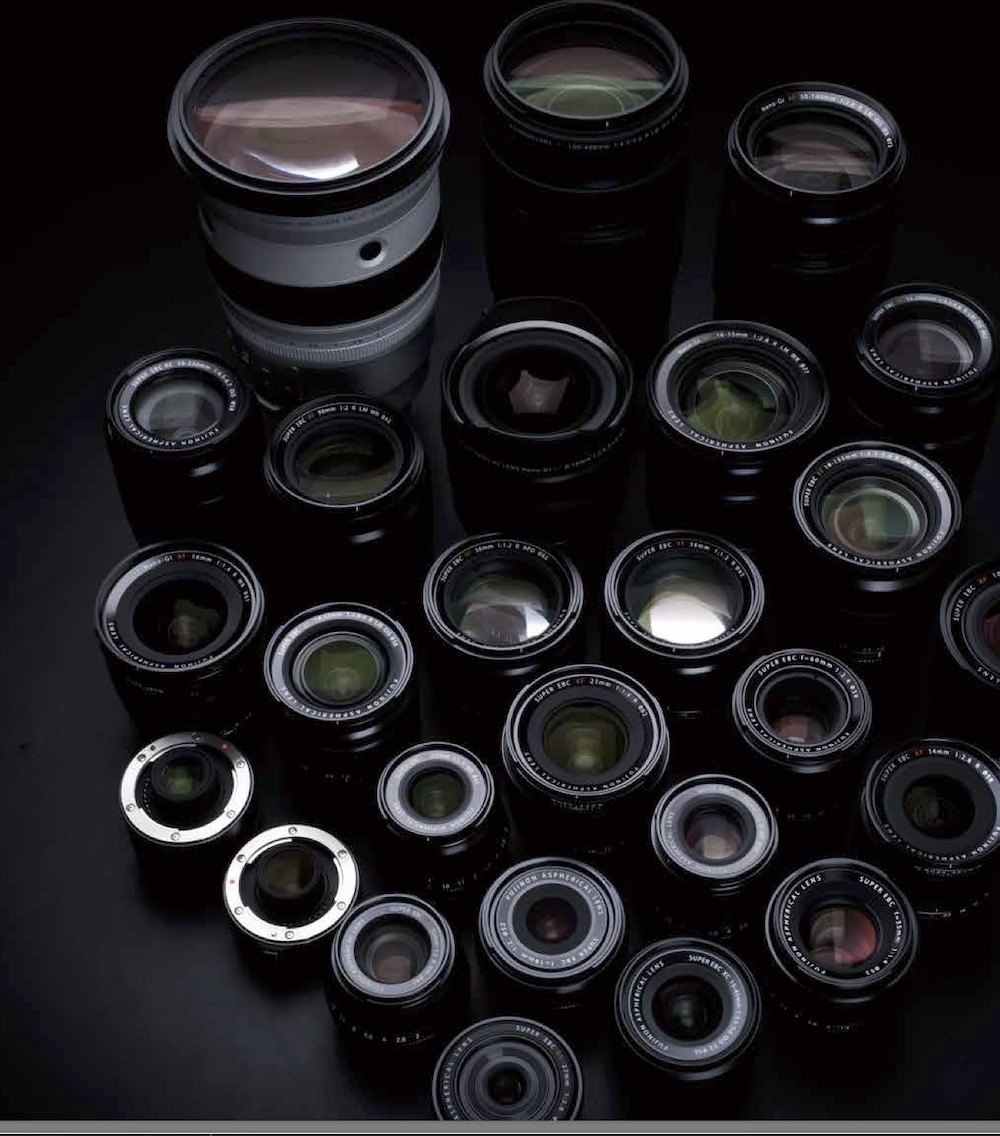
And then there’s Fujifilm… Their APS-C strategy makes a ton of sense, and, unless you print big, an APS-C camera can be a great choice. They offer very appealing APS-C bodies and especially lenses, to the extent that I personally wouldn’t buy any other brand’s APS-C offering. I just attached Not Recommended rating to any non-Fujifilm APS-C camera, which will be rescinded if somebody starts paying attention to lenses. All of Canon, Sony and Nikon have some great APS-C bodies crying out for lenses. The problem is what happens when you want more than Fujifilm’s flagship X-T4 can deliver?
Fujifilm’s APS-C line makes sense for the most part – you can get into a Fujifilm system as low as $799 for an X-T200 body with a low-end lens, and the top model, the $1700 X-T4, is an extremely capable all-around camera. There is a very good selection of both bodies and lenses through the range, including a couple of the best “kit” lenses on the market and a line of nice compact primes (the “ Fujicrons”) that look like they should be Micro 4/3 lenses. As is always true of APS-C, there is little sensor diversity. The least expensive bodies use the older 24 MP sensor that is shared with all of Sony’s APS-C line, while the midrange and above use the much newer 26 MP sensor – an incremental difference, but nothing like the choice of truly different sensors full-frame users get.
At the top of the Fujifilm APS-C line sits the $1700 X-T4. It’s a tough, fast and versatile beast that’s almost certainly the best all-around camera under $2000. There’s even a surprisingly good argument that it’s the best all-around camera under $3500 (you can easily exceed its image quality, its speed, its AF OR its video performance, but the combination is hard to beat). Even at $3500, everything else has tradeoffs in some area or other.
The Z7 and Z7 II have much better IQ right around $3500 (with an original Z7 somewhat cheaper), giving up little in other areas, but with more limited lens choices. The A7r IV, again right around $3500, has much better IQ and a ton of lenses, but it’s a considerably slower camera (although not to focus) with much less video capability. The S1H and A7S III offer considerably better video, but at the cost of bulk and lens lineup (S1H) or still photo capability (A7S III). The EOS-R5 seems to beat the X-T4 at everything (usual disclaimer that I haven’t used an R5) for $3900, but it has the overheating issue (the X-T4 is pretty bulletproof). The R5 has almost as good a lens lineup, although they’re bulkier. The Sony A1 pretty clearly DOES beat the X-T4 at everything, but it’s $6500. It’s quite a testament to the versatility of the X-T4 that the only camera around that is a clear, major upgrade in ALL areas at once costs $6500.
Fujifilm has no option that’s faster than an X-T4, or that has better video. In order to do that, they’d almost certainly need a new APS-C sensor that doesn’t exist yet. The X-T4 is pushing the limits of its sensor, and the present limits of APS-C, pretty hard. They DO have a compelling option for better IQ, not only than the X-T4, but than everything else as well. Unfortunately, it’s $6000 and doesn’t share lenses – with little in between. If you’re going to spend $4500 on a 50 MP GFX, it probably makes sense to go straight to the $6000 100S for the much newer sensor and the excellent image stabilization. The X and GFX systems do both speak “Fujifilm“ in an identifiable way. There are similarities in control philosophy, and there are strong similarities in color and overall look, enough so that many GFX shooters should also own an X-T4 (less so the other way around, because GFXs are expensive and somewhat specialized).
What’s next? The obvious big (and imminent) introductions are the EOS-R3 and the Z9. Many of us don’t need that kind of speed, but big sports cameras can be interesting for the looks they provide at upcoming technologies. We’ll probably see an improved midrange full-frame sensor soon – nothing flashy, but maybe very important because of how many cameras use it. The logical place for it to be introduced is in the Sony A7 IV, since it will be a Sony design – but it will spread quickly. Most non-Canon full-frame bodies under $3000 (and certainly under $2500) will adopt it or a variation, and even Canon, who make their own sensors, will likely benchmark off of its capabilities.
There is some argument that the midrange sensor found in the A7 IV, Z6 III, etc. will move as high as 40 MP, because that is the minimum to enable 8K video, and 8K may become a required spec during the lifetime of this midrange sensor. Others say it’ll be around 30 MP, leaving 8K for more expensive bodies with special higher-resolution sensors for the next few years.
The next really big step will be the next high-end sensor generation – perhaps another bunch of sensors in different sizes on a common architecture from Sony, similar to the X-T3 -4/A7r IV/ GFX 100(S)/ Phase One 150 family. There is talk of a resolution jump, maybe to 40 MP (barely 8K video) in APS-C, with 100 MP or so in full-frame. The (Fujifilm size) medium format version would be 160-170 MP if they released one, with a (perhaps unlikely) Phase One size sensor coming in around 230-240 MP.
One interesting anomaly if that group of sensors came out at 40/100/160 MP and the new mainstream full-frame sensor was around 30 MP would be that the new top-end APS-C sensor would significantly exceed the resolution and video capability of the sensor in every full-frame camera under $3000. The APS-C sensor might very well not exceed the image quality of the full-frame sensor, since a 40 MP APS-C sensor would carry a significant risk of noise and other image quality damage – but it would pose tradeoffs – video capability and resolution for actual image quality.
What kind of quality and speed would such a sensor provide? It might start right off as a leap, but it might not. The history of 40+ MP full-frame sensors is instructive as to what might happen (although the 24 and 36 MP FF sensors both had excellent image quality from the beginning, and the early 36s weren’t even especially slow). The first FF sensor to break 40 MP was the sensor in the Canon 5Ds. It DID have superb resolution, but it was a relatively limited use sensor. It got noisy at medium and high ISOs, and its low ISO dynamic range wasn’t great. In the studio, under controlled lighting, it could compete with the Phase One backs of the day. Under a broader range of conditions, you were almost always better off with a 36 MP D800, and often with a 24 MP camera. The second generation encompasses the A7r II/III sensor, the D850/Z7 sensor, the A7r IV sensor, etc. They have superb image quality under a broad range of conditions, coupled with decent, but not overwhelming, speed. They are excellent general-purpose sensors, but with some limitations, especially for action. The third generation of 40+ MP sensors is led off by the R5 and the A1 – truly no-compromise tools that excel at most photographic tasks. It’s very unlikely that the first sensors of the next resolution jump will be higher resolution A1s – the question isn’t whether there will be compromises, but which ones and how many?
We can’t expect the first 100 MP FF sensor to provide the image quality of the GFX sensor while also running at 30 fps. Some sensor may eventually get there, but it would be very surprising if it was the first iteration. If image quality is extremely high, it’s likely to be relatively slow. It’s reasonably likely that image quality isn’t going to be what we’re hoping for right away. Those pixels will be tiny, smaller than those on the Same Old Sensor (although larger than those on the popular 20 MP 1” sensor found in a lot of premium compacts, drones and even the occasional phone). My best guess is that per-pixel image quality will exceed the Same Old Sensor and the 1” sensor, which are fairly similar, but I don’t know by how much… The latest versions of the 1” sensor are relatively modern designs, but have a pixel size one substantial jump smaller (similar to a 150 MP full-frame sensor). The Same Old Sensor is equivalent in pixel density to about an 80 MP full-frame sensor, but it uses significantly older technology.
We probably will see the jump to that kind of sensor resolution in the next couple of years, because it makes sense for video and sensor resolution decisions are largely driven by video requirements. A pixel pitch that works out to 40 MP at APS- C and 100 MP at full-frame allows an APS-C camera to record 8K video, and a full-frame camera to meaningfully oversample 8K instead of cropping (or potentially to shoot 12K, but 12K is presently both undistributable and undisplayable – not the most useful of formats).
An 80 MP full-frame sensor and a 32 MP APS-C sensor are both odd sizes for video, rendering the jump all the way to 40/100 MP more likely. An 80 MP sensor with a 3:2 aspect ratio isn’t quite 12,000 pixels across, preventing the sensible 1.5:1 oversample, and probably imposing either a significant crop or uneven line-skipping. Unless the aspect ratio of the sensor is 16:9, 8K just doesn’t fit on a 32 MP sensor, so it’s worse for video than the common 24-26 MP sensors (still no 8K, and it imposes a crop at 4K). A 100 MP sensor turns out to be just about right for oversampled 8K, and its 40 MP APS-C relative just fits native 8K.
What will the rest of this year bring? We are certainly expecting the two sports cameras, although maybe late enough that widespread availability of one or both could be in 2022. We’ll probably see a couple of Sonys, hopefully including the A7 IV with the new midrange sensor. There are possibilities of an entry-level Nikon and maybe even one more body (beyond the Z9), plus lenses – hopefully including at least one of the four telephotos on their roadmap. I haven’t heard much from Canon beyond the R3 or from Fujifilm, nor rumors about them – the most solid possibility seems to be a “GFX 50S II” that puts the older 50 MP sensor into a GFX 100S type body with image stabilization. Such a camera makes the most sense if there are a lot of 50 MP medium format sensors on a shelf somewhere. Not a lot of cameras (or lenses) but quite a few ambitious ones…
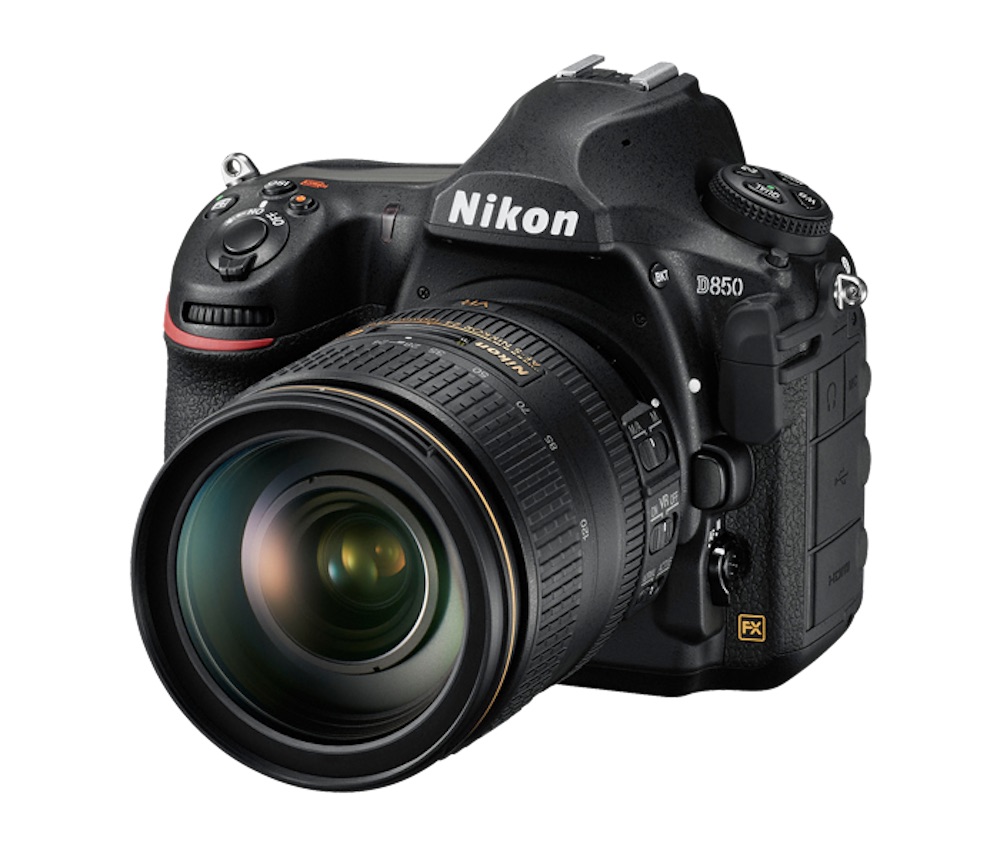
As we look farther ahead, we are probably looking at more DSLR discontinuations (and very few if any DSLR updates). We will continue to see mirrorless bodies and lenses update, although we may be approaching what Thom Hogan calls “last camera syndrome” – when what we have is good enough. There will continue to be a market for sterling image quality, and my experience with the GFX 100S has shown me that nothing else is operating at the edge of vision yet. Finding out whether the GFX 100S itself is there or close would require a reference standard of even higher theoretical quality, just as it took the GFX 100S to show how much room is left above the full-frame pixel monsters. An impossible to review Phase One IQ4 150 would be the only real possibility, and it’s a smaller theoretical leap from the GFX than the GFX is from the best of full-frame. Some calculations say that the limit isn’t far, but those are disputed. A 400 MP camera is almost certainly above the limit, as it would print 30×40” at 600 dpi (and there’s no viewing location where the eye can take in both the size and the acuity of that print). Where the limit is between 100 and 400 MP is yet unknown.
On the other hand, ultimate acuity in very large prints is a small part of the overall uses for cameras. For the much more common digital sharing, every decent camera is already getting crunched by the limitations of social platforms and display devices. Even a common, relatively inexpensive 24 MP camera can outresolve any computer screen, any TV except 8K and any common image sharing platform. It has better color and more dynamic range than any non-OLED display. One of my hopes, and the Epson ET-8550 I recently reviewed raised those hopes, is that we will see printers hit the market that spread the craft of printing more widely. The ET-8550 is a good printer, although not a perfect one, and it is a reasonably sized machine with low operating costs that should make printing attractive to a new group of users – including schools. We need more printers that bring the craft of the print, the seeking of something beyond only digital display, to a wider audience.
We will almost certainly see 8K video become more common, although whether or not it becomes truly mainstream in the next couple of years will probably depend on whether the new mainstream sensor introduced in the A7 IV has the resolution to support it. If 8K is limited to cameras that tout high resolution as a specific feature, it will be confined to the top 10-20% of the market, while if it comes standard with mainstream sensors, it will penetrate much farther.
I don’t see any major moves in 8K distribution for a few years – 8K TVs are still exclusively over $2000 (the few models from lower-cost brands cluster around $2000-$2500, and the big brands are $2500 and up), and 8K projectors don’t exist in any meaningful way. Showing 8K footage will require owning an 8K TV and somehow getting the signal into it (no mean feat since 8K streaming boxes also don’t exist – the only reliable 8K signal source is a gaming-grade GPU on a powerful computer), and distributing 8K widely will remain difficult to impossible for years to come – the Olympics are always on the cutting edge of broadcasting, and even getting 4K coverage of the Tokyo Games required having certain TV providers and living in certain markets. Many of us got the biggest broadcast event around in 1080p HD, even in wealthy countries. If the most watched event possible, transmitted from high-tech Japan, is still only partially in 4K in 2021, how much longer will it take before there is significant 8K distribution?

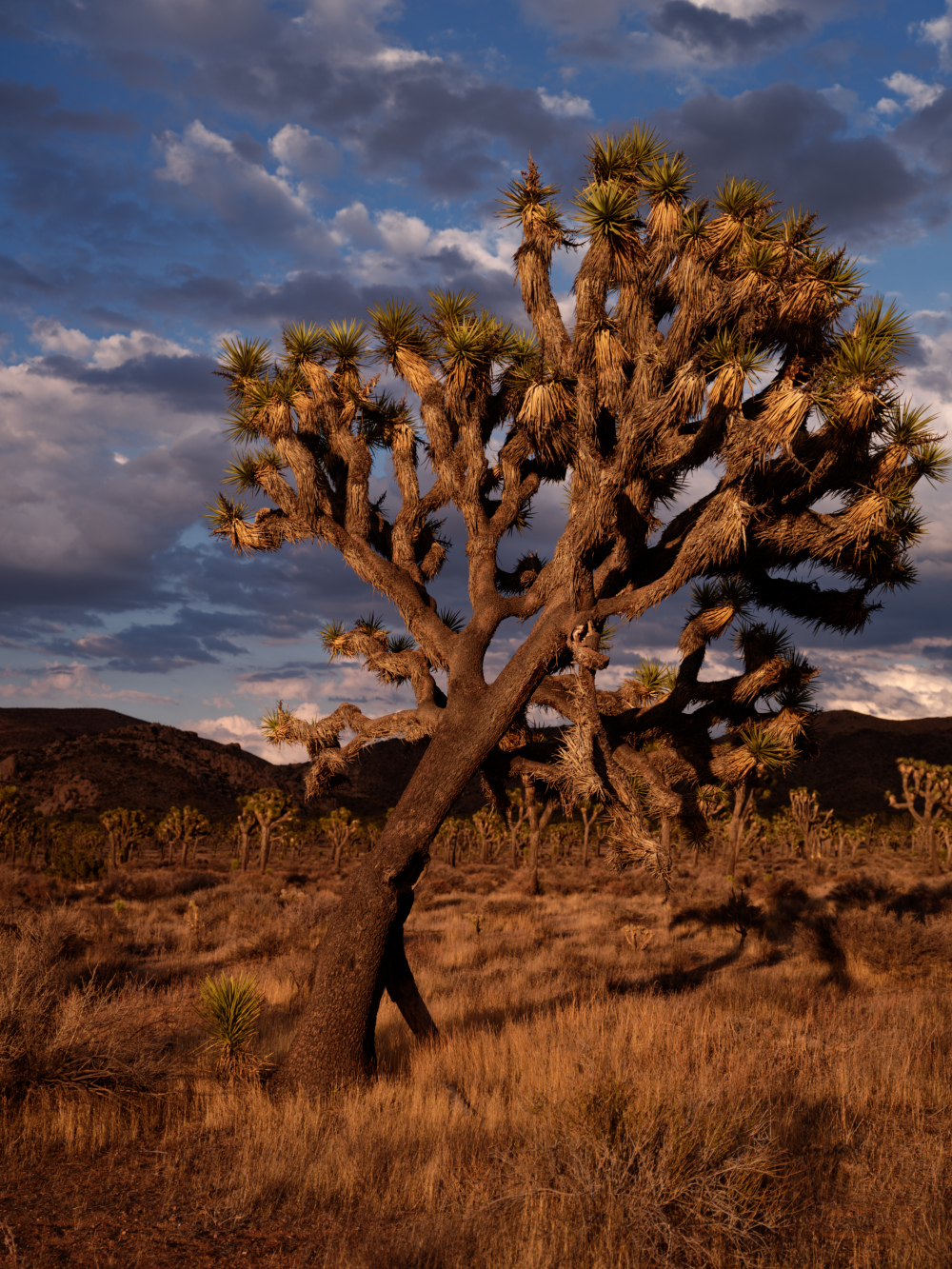

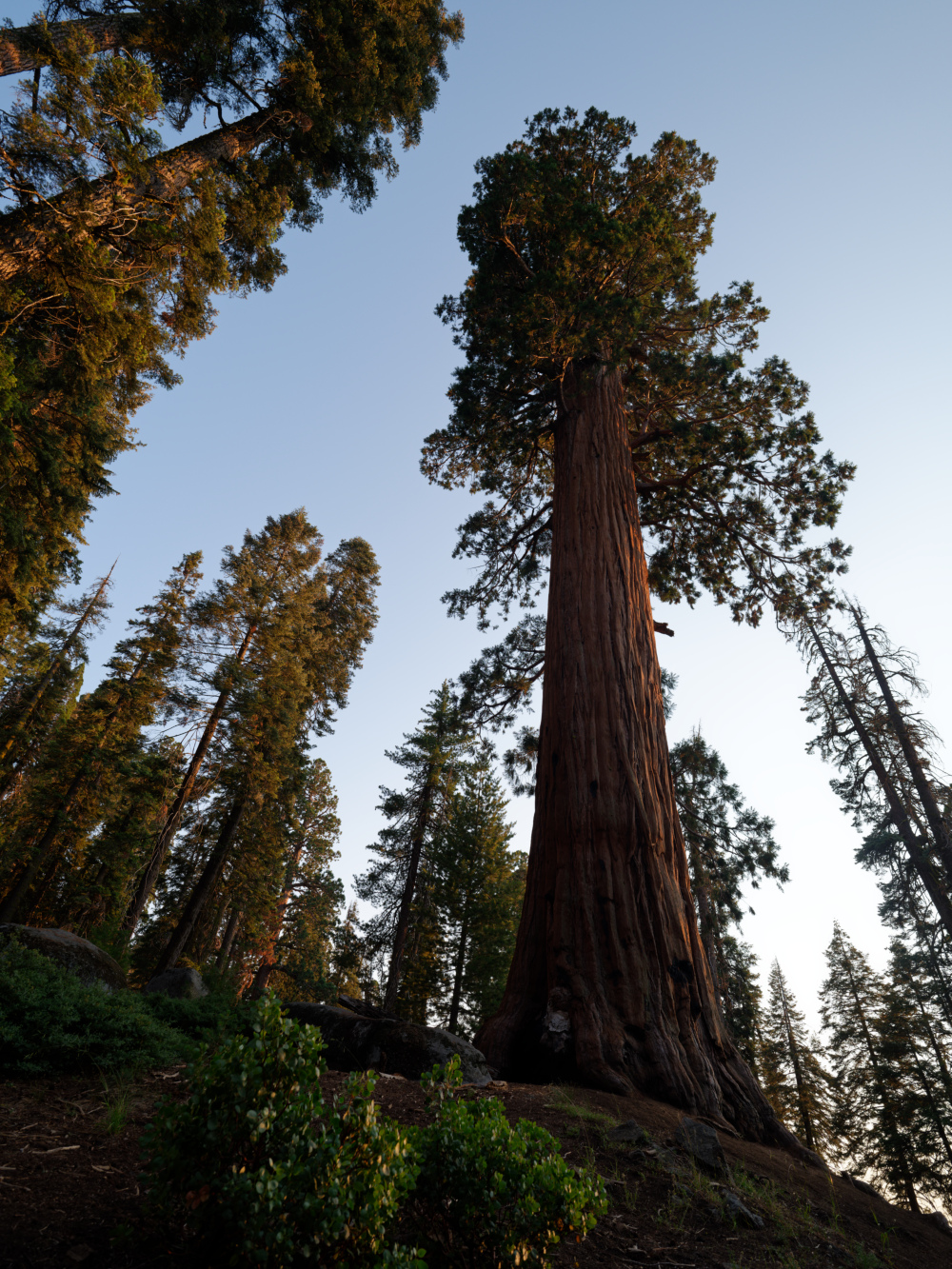
A more important challenge than anything in the hardware realm is getting a new generation to take photography seriously. I don’t care what people are photographing, but I am deeply concerned by the self-indulgent, advertising-driven aesthetic of social media and selfie culture. My personal aesthetic is relatively traditional landscape with a side order of wildlife – I love to photograph trees, mountains, lakes and rivers, along with the spectacles of migration because I find peace, awe, spirit and fulfillment in those places and things. If other photographers want to make beautiful, considered images of the human figure, showing how beautiful we all are, more power to them. If others want to work in documentary styles, exposing both the power and the injustice in our world, they should do that too. Those who love architecture, still life, or the highly manipulated image (or anything else) should work to their preference too – all these things are important in building an image of our world, and all of them bring important and beautiful meaning.
The special ad mode in the Sony ZV-E10 frightens me because it is a tool built exclusively for the purpose of pushing commercial perfection. My GFX was built by photographers, for photographers – it is built to make a beautiful photograph of whatever its creative user points it at, which could be landscape, portraiture, architecture (three of its particular strengths) or anything else. That’s what cameras have historically been made to do, with different strengths to suit different visions. Fujifilm has a lot of photographers on their design team right now (and it shows), but the other makers do it too – a Canon 1Dx mk III is a wonderful tool for capturing the elegance of sport. A camera built to make only ads, to do nothing but push products and cater to self-indulgence, is a frighteningly different beast.
Where I get scared is when I see images that are driven by brands, that show an all-too-perfect life made more perfect by the latest fashions, that show that we need to keep up with the Joneses, that happiness comes in a box with a smirk. I grew up in a wealthy suburb with overly perfect ChemLawns and outwardly beautiful fake Colonials, but I grew up bullied and miserable in that suburb, all too aware that it is far from a perfect place. That experience is what has driven me to seek true beauty in wild places, and, when I return, to try to capture that beauty on paper in the making of a fine print that holds as much of the spirit of the place as I can. From the camera and lenses with the truest capture I can find to paper from a 500-year-old mill in Europe or Japan, my tools are the things that let me bring the spirit of a beautiful, wild place to a piece of art.
I am deeply concerned that the aesthetic of social media, shaped by the omnipotent and inscrutable recommendation algorithms of Facebook and Google, is directly contrary to what I seek, and is much more like the outward consumer perfection of the town I grew up in. The big platforms, companies so dominant that individual artists and communities have no control over them, are pushing what we all see towards more and more advertising, more and more visions of perfection in self-indulgence. There have been photographers who have taken some form of the selfie seriously, showing themselves in reflective moments, capturing feelings and truth. Cindy Sherman is a well-known photographer who has spent most of her career making images of herself in a variety of settings, images that speak to beauty, femininity, aging, fashion and other topics. My personal tastes run more to Ansel Adams than Cindy Sherman, but Sherman is an equally serious and important artist, making an important and considered statement on society. Selfies in the present sense of the term have nothing to do with Cindy Sherman – if Sherman ever photographed “perfection”, her goal would be to say that it doesn’t exist, or that it’s not the same for all of us. The aesthetic of Instagram and friends is that perfection does exist, and if you aren’t living this perfect, commercial life, it’s your own fault. A dystopian vision if one ever existed, and one I became disturbingly familiar with in the shallow “perfection” of the town I grew up in.
Dan Wells
September 2021

Lorem ipsum dolor sit amet, consectetur adipiscing elit, sed do eiusmod tempor incididunt ut labore et dolore magna aliqua. Ut enim ad minim veniam, quis nostrud exercitation ullamco laboris nisi ut aliquip ex ea commodo consequat. Duis aute irure dolor in reprehenderit in voluptate velit esse cillum dolore eu fugiat nulla pariatur. Excepteur sint occaecat cupidatat non proident, sunt in culpa qui officia deserunt mollit anim id est laborum.
Lorem ipsum dolor sit amet, consectetur adipiscing elit, sed do eiusmod tempor incididunt ut labore et dolore magna aliqua. Ut enim ad minim veniam, quis nostrud exercitation ullamco laboris nisi ut aliquip ex ea commodo consequat. Duis aute irure dolor in reprehenderit in voluptate velit esse cillum dolore eu fugiat nulla pariatur. Excepteur sint occaecat cupidatat non proident, sunt in culpa qui officia deserunt mollit anim id est laborum.

Lorem ipsum dolor sit amet, consectetur adipiscing elit, sed do eiusmod tempor incididunt ut labore et dolore magna aliqua. Ut enim ad minim veniam, quis nostrud exercitation ullamco laboris nisi ut aliquip ex ea commodo consequat. Duis aute irure dolor in reprehenderit in voluptate velit esse cillum dolore eu fugiat nulla pariatur. Excepteur sint occaecat cupidatat non proident, sunt in culpa qui officia deserunt mollit anim id est laborum.
Lorem ipsum dolor sit amet, consectetur adipiscing elit, sed do eiusmod tempor incididunt ut labore et dolore magna aliqua. Ut enim ad minim veniam, quis nostrud exercitation ullamco laboris nisi ut aliquip ex ea commodo consequat. Duis aute irure dolor in reprehenderit in voluptate velit esse cillum dolore eu fugiat nulla pariatur. Excepteur sint occaecat cupidatat non proident, sunt in culpa qui officia deserunt mollit anim id est laborum.

Lorem ipsum dolor sit amet, consectetur adipiscing elit, sed do eiusmod tempor incididunt ut labore et dolore magna aliqua. Ut enim ad minim veniam, quis nostrud exercitation ullamco laboris nisi ut aliquip ex ea commodo consequat. Duis aute irure dolor in reprehenderit in voluptate velit esse cillum dolore eu fugiat nulla pariatur. Excepteur sint occaecat cupidatat non proident, sunt in culpa qui officia deserunt mollit anim id est laborum.

Lorem ipsum dolor sit amet, consectetur adipiscing elit, sed do eiusmod tempor incididunt ut labore et dolore magna aliqua. Ut enim ad minim veniam, quis nostrud exercitation ullamco laboris nisi ut aliquip ex ea commodo consequat. Duis aute irure dolor in reprehenderit in voluptate velit esse cillum dolore eu fugiat nulla pariatur. Excepteur sint occaecat cupidatat non proident, sunt in culpa qui officia deserunt mollit anim id est laborum.

Lorem ipsum dolor sit amet, consectetur adipiscing elit, sed do eiusmod tempor incididunt ut labore et dolore magna aliqua. Ut enim ad minim veniam, quis nostrud exercitation ullamco laboris nisi ut aliquip ex ea commodo consequat. Duis aute irure dolor in reprehenderit in voluptate velit esse cillum dolore eu fugiat nulla pariatur. Excepteur sint occaecat cupidatat non proident, sunt in culpa qui officia deserunt mollit anim id est laborum.
Lorem ipsum dolor sit amet, consectetur adipiscing elit, sed do eiusmod tempor incididunt ut labore et dolore magna aliqua. Ut enim ad minim veniam, quis nostrud exercitation ullamco laboris nisi ut aliquip ex ea commodo consequat. Duis aute irure dolor in reprehenderit in voluptate velit esse cillum dolore eu fugiat nulla pariatur. Excepteur sint occaecat cupidatat non proident, sunt in culpa qui officia deserunt mollit anim id est laborum.

Lorem ipsum dolor sit amet, consectetur adipiscing elit, sed do eiusmod tempor incididunt ut labore et dolore magna aliqua. Ut enim ad minim veniam, quis nostrud exercitation ullamco laboris nisi ut aliquip ex ea commodo consequat. Duis aute irure dolor in reprehenderit in voluptate velit esse cillum dolore eu fugiat nulla pariatur. Excepteur sint occaecat cupidatat non proident, sunt in culpa qui officia deserunt mollit anim id est laborum.
Lorem ipsum dolor sit amet, consectetur adipiscing elit, sed do eiusmod tempor incididunt ut labore et dolore magna aliqua. Ut enim ad minim veniam, quis nostrud exercitation ullamco laboris nisi ut aliquip ex ea commodo consequat. Duis aute irure dolor in reprehenderit in voluptate velit esse cillum dolore eu fugiat nulla pariatur. Excepteur sint occaecat cupidatat non proident, sunt in culpa qui officia deserunt mollit anim id est laborum.
Lorem ipsum dolor sit amet, consectetur adipiscing elit, sed do eiusmod tempor incididunt ut labore et dolore magna aliqua. Ut enim ad minim veniam, quis nostrud exercitation ullamco laboris nisi ut aliquip ex ea commodo consequat. Duis aute irure dolor in reprehenderit in voluptate velit esse cillum dolore eu fugiat nulla pariatur. Excepteur sint occaecat cupidatat non proident, sunt in culpa qui officia deserunt mollit anim id est laborum.
Lorem ipsum dolor sit amet, consectetur adipiscing elit, sed do eiusmod tempor incididunt ut labore et dolore magna aliqua. Ut enim ad minim veniam, quis nostrud exercitation ullamco laboris nisi ut aliquip ex ea commodo consequat. Duis aute irure dolor in reprehenderit in voluptate velit esse cillum dolore eu fugiat nulla pariatur. Excepteur sint occaecat cupidatat non proident, sunt in culpa qui officia deserunt mollit anim id est laborum.

Lorem ipsum dolor sit amet, consectetur adipiscing elit, sed do eiusmod tempor incididunt ut labore et dolore magna aliqua. Ut enim ad minim veniam, quis nostrud exercitation ullamco laboris nisi ut aliquip ex ea commodo consequat. Duis aute irure dolor in reprehenderit in voluptate velit esse cillum dolore eu fugiat nulla pariatur. Excepteur sint occaecat cupidatat non proident, sunt in culpa qui officia deserunt mollit anim id est laborum.

Lorem ipsum dolor sit amet, consectetur adipiscing elit, sed do eiusmod tempor incididunt ut labore et dolore magna aliqua. Ut enim ad minim veniam, quis nostrud exercitation ullamco laboris nisi ut aliquip ex ea commodo consequat. Duis aute irure dolor in reprehenderit in voluptate velit esse cillum dolore eu fugiat nulla pariatur. Excepteur sint occaecat cupidatat non proident, sunt in culpa qui officia deserunt mollit anim id est laborum.
Lorem ipsum dolor sit amet, consectetur adipiscing elit, sed do eiusmod tempor incididunt ut labore et dolore magna aliqua. Ut enim ad minim veniam, quis nostrud exercitation ullamco laboris nisi ut aliquip ex ea commodo consequat. Duis aute irure dolor in reprehenderit in voluptate velit esse cillum dolore eu fugiat nulla pariatur. Excepteur sint occaecat cupidatat non proident, sunt in culpa qui officia deserunt mollit anim id est laborum.
Lorem ipsum dolor sit amet, consectetur adipiscing elit, sed do eiusmod tempor incididunt ut labore et dolore magna aliqua. Ut enim ad minim veniam, quis nostrud exercitation ullamco laboris nisi ut aliquip ex ea commodo consequat. Duis aute irure dolor in reprehenderit in voluptate velit esse cillum dolore eu fugiat nulla pariatur. Excepteur sint occaecat cupidatat non proident, sunt in culpa qui officia deserunt mollit anim id est laborum.
Lorem ipsum dolor sit amet, consectetur adipiscing elit, sed do eiusmod tempor incididunt ut labore et dolore magna aliqua. Ut enim ad minim veniam, quis nostrud exercitation ullamco laboris nisi ut aliquip ex ea commodo consequat. Duis aute irure dolor in reprehenderit in voluptate velit esse cillum dolore eu fugiat nulla pariatur. Excepteur sint occaecat cupidatat non proident, sunt in culpa qui officia deserunt mollit anim id est laborum.

Lorem ipsum dolor sit amet, consectetur adipiscing elit, sed do eiusmod tempor incididunt ut labore et dolore magna aliqua. Ut enim ad minim veniam, quis nostrud exercitation ullamco laboris nisi ut aliquip ex ea commodo consequat. Duis aute irure dolor in reprehenderit in voluptate velit esse cillum dolore eu fugiat nulla pariatur. Excepteur sint occaecat cupidatat non proident, sunt in culpa qui officia deserunt mollit anim id est laborum.
Lorem ipsum dolor sit amet, consectetur adipiscing elit, sed do eiusmod tempor incididunt ut labore et dolore magna aliqua. Ut enim ad minim veniam, quis nostrud exercitation ullamco laboris nisi ut aliquip ex ea commodo consequat. Duis aute irure dolor in reprehenderit in voluptate velit esse cillum dolore eu fugiat nulla pariatur. Excepteur sint occaecat cupidatat non proident, sunt in culpa qui officia deserunt mollit anim id est laborum.

Lorem ipsum dolor sit amet, consectetur adipiscing elit, sed do eiusmod tempor incididunt ut labore et dolore magna aliqua. Ut enim ad minim veniam, quis nostrud exercitation ullamco laboris nisi ut aliquip ex ea commodo consequat. Duis aute irure dolor in reprehenderit in voluptate velit esse cillum dolore eu fugiat nulla pariatur. Excepteur sint occaecat cupidatat non proident, sunt in culpa qui officia deserunt mollit anim id est laborum.

Lorem ipsum dolor sit amet, consectetur adipiscing elit, sed do eiusmod tempor incididunt ut labore et dolore magna aliqua. Ut enim ad minim veniam, quis nostrud exercitation ullamco laboris nisi ut aliquip ex ea commodo consequat. Duis aute irure dolor in reprehenderit in voluptate velit esse cillum dolore eu fugiat nulla pariatur. Excepteur sint occaecat cupidatat non proident, sunt in culpa qui officia deserunt mollit anim id est laborum.
Lorem ipsum dolor sit amet, consectetur adipiscing elit, sed do eiusmod tempor incididunt ut labore et dolore magna aliqua. Ut enim ad minim veniam, quis nostrud exercitation ullamco laboris nisi ut aliquip ex ea commodo consequat. Duis aute irure dolor in reprehenderit in voluptate velit esse cillum dolore eu fugiat nulla pariatur. Excepteur sint occaecat cupidatat non proident, sunt in culpa qui officia deserunt mollit anim id est laborum.

Lorem ipsum dolor sit amet, consectetur adipiscing elit, sed do eiusmod tempor incididunt ut labore et dolore magna aliqua. Ut enim ad minim veniam, quis nostrud exercitation ullamco laboris nisi ut aliquip ex ea commodo consequat. Duis aute irure dolor in reprehenderit in voluptate velit esse cillum dolore eu fugiat nulla pariatur. Excepteur sint occaecat cupidatat non proident, sunt in culpa qui officia deserunt mollit anim id est laborum.
Lorem ipsum dolor sit amet, consectetur adipiscing elit, sed do eiusmod tempor incididunt ut labore et dolore magna aliqua. Ut enim ad minim veniam, quis nostrud exercitation ullamco laboris nisi ut aliquip ex ea commodo consequat. Duis aute irure dolor in reprehenderit in voluptate velit esse cillum dolore eu fugiat nulla pariatur. Excepteur sint occaecat cupidatat non proident, sunt in culpa qui officia deserunt mollit anim id est laborum.
Lorem ipsum dolor sit amet, consectetur adipiscing elit, sed do eiusmod tempor incididunt ut labore et dolore magna aliqua. Ut enim ad minim veniam, quis nostrud exercitation ullamco laboris nisi ut aliquip ex ea commodo consequat. Duis aute irure dolor in reprehenderit in voluptate velit esse cillum dolore eu fugiat nulla pariatur. Excepteur sint occaecat cupidatat non proident, sunt in culpa qui officia deserunt mollit anim id est laborum.
Lorem ipsum dolor sit amet, consectetur adipiscing elit, sed do eiusmod tempor incididunt ut labore et dolore magna aliqua. Ut enim ad minim veniam, quis nostrud exercitation ullamco laboris nisi ut aliquip ex ea commodo consequat. Duis aute irure dolor in reprehenderit in voluptate velit esse cillum dolore eu fugiat nulla pariatur. Excepteur sint occaecat cupidatat non proident, sunt in culpa qui officia deserunt mollit anim id est laborum.

Lorem ipsum dolor sit amet, consectetur adipiscing elit, sed do eiusmod tempor incididunt ut labore et dolore magna aliqua. Ut enim ad minim veniam, quis nostrud exercitation ullamco laboris nisi ut aliquip ex ea commodo consequat. Duis aute irure dolor in reprehenderit in voluptate velit esse cillum dolore eu fugiat nulla pariatur. Excepteur sint occaecat cupidatat non proident, sunt in culpa qui officia deserunt mollit anim id est laborum.
Lorem ipsum dolor sit amet, consectetur adipiscing elit, sed do eiusmod tempor incididunt ut labore et dolore magna aliqua. Ut enim ad minim veniam, quis nostrud exercitation ullamco laboris nisi ut aliquip ex ea commodo consequat. Duis aute irure dolor in reprehenderit in voluptate velit esse cillum dolore eu fugiat nulla pariatur. Excepteur sint occaecat cupidatat non proident, sunt in culpa qui officia deserunt mollit anim id est laborum.
Lorem ipsum dolor sit amet, consectetur adipiscing elit, sed do eiusmod tempor incididunt ut labore et dolore magna aliqua. Ut enim ad minim veniam, quis nostrud exercitation ullamco laboris nisi ut aliquip ex ea commodo consequat. Duis aute irure dolor in reprehenderit in voluptate velit esse cillum dolore eu fugiat nulla pariatur. Excepteur sint occaecat cupidatat non proident, sunt in culpa qui officia deserunt mollit anim id est laborum.

Lorem ipsum dolor sit amet, consectetur adipiscing elit, sed do eiusmod tempor incididunt ut labore et dolore magna aliqua. Ut enim ad minim veniam, quis nostrud exercitation ullamco laboris nisi ut aliquip ex ea commodo consequat. Duis aute irure dolor in reprehenderit in voluptate velit esse cillum dolore eu fugiat nulla pariatur. Excepteur sint occaecat cupidatat non proident, sunt in culpa qui officia deserunt mollit anim id est laborum.
Lorem ipsum dolor sit amet, consectetur adipiscing elit, sed do eiusmod tempor incididunt ut labore et dolore magna aliqua. Ut enim ad minim veniam, quis nostrud exercitation ullamco laboris nisi ut aliquip ex ea commodo consequat. Duis aute irure dolor in reprehenderit in voluptate velit esse cillum dolore eu fugiat nulla pariatur. Excepteur sint occaecat cupidatat non proident, sunt in culpa qui officia deserunt mollit anim id est laborum.
Lorem ipsum dolor sit amet, consectetur adipiscing elit, sed do eiusmod tempor incididunt ut labore et dolore magna aliqua. Ut enim ad minim veniam, quis nostrud exercitation ullamco laboris nisi ut aliquip ex ea commodo consequat. Duis aute irure dolor in reprehenderit in voluptate velit esse cillum dolore eu fugiat nulla pariatur. Excepteur sint occaecat cupidatat non proident, sunt in culpa qui officia deserunt mollit anim id est laborum.
Lorem ipsum dolor sit amet, consectetur adipiscing elit, sed do eiusmod tempor incididunt ut labore et dolore magna aliqua. Ut enim ad minim veniam, quis nostrud exercitation ullamco laboris nisi ut aliquip ex ea commodo consequat. Duis aute irure dolor in reprehenderit in voluptate velit esse cillum dolore eu fugiat nulla pariatur. Excepteur sint occaecat cupidatat non proident, sunt in culpa qui officia deserunt mollit anim id est laborum.

Lorem ipsum dolor sit amet, consectetur adipiscing elit, sed do eiusmod tempor incididunt ut labore et dolore magna aliqua. Ut enim ad minim veniam, quis nostrud exercitation ullamco laboris nisi ut aliquip ex ea commodo consequat. Duis aute irure dolor in reprehenderit in voluptate velit esse cillum dolore eu fugiat nulla pariatur. Excepteur sint occaecat cupidatat non proident, sunt in culpa qui officia deserunt mollit anim id est laborum.
Lorem ipsum dolor sit amet, consectetur adipiscing elit, sed do eiusmod tempor incididunt ut labore et dolore magna aliqua. Ut enim ad minim veniam, quis nostrud exercitation ullamco laboris nisi ut aliquip ex ea commodo consequat. Duis aute irure dolor in reprehenderit in voluptate velit esse cillum dolore eu fugiat nulla pariatur. Excepteur sint occaecat cupidatat non proident, sunt in culpa qui officia deserunt mollit anim id est laborum.

Lorem ipsum dolor sit amet, consectetur adipiscing elit, sed do eiusmod tempor incididunt ut labore et dolore magna aliqua. Ut enim ad minim veniam, quis nostrud exercitation ullamco laboris nisi ut aliquip ex ea commodo consequat. Duis aute irure dolor in reprehenderit in voluptate velit esse cillum dolore eu fugiat nulla pariatur. Excepteur sint occaecat cupidatat non proident, sunt in culpa qui officia deserunt mollit anim id est laborum.
Lorem ipsum dolor sit amet, consectetur adipiscing elit, sed do eiusmod tempor incididunt ut labore et dolore magna aliqua. Ut enim ad minim veniam, quis nostrud exercitation ullamco laboris nisi ut aliquip ex ea commodo consequat. Duis aute irure dolor in reprehenderit in voluptate velit esse cillum dolore eu fugiat nulla pariatur. Excepteur sint occaecat cupidatat non proident, sunt in culpa qui officia deserunt mollit anim id est laborum.
Lorem ipsum dolor sit amet, consectetur adipiscing elit, sed do eiusmod tempor incididunt ut labore et dolore magna aliqua. Ut enim ad minim veniam, quis nostrud exercitation ullamco laboris nisi ut aliquip ex ea commodo consequat. Duis aute irure dolor in reprehenderit in voluptate velit esse cillum dolore eu fugiat nulla pariatur. Excepteur sint occaecat cupidatat non proident, sunt in culpa qui officia deserunt mollit anim id est laborum.
Lorem ipsum dolor sit amet, consectetur adipiscing elit, sed do eiusmod tempor incididunt ut labore et dolore magna aliqua. Ut enim ad minim veniam, quis nostrud exercitation ullamco laboris nisi ut aliquip ex ea commodo consequat. Duis aute irure dolor in reprehenderit in voluptate velit esse cillum dolore eu fugiat nulla pariatur. Excepteur sint occaecat cupidatat non proident, sunt in culpa qui officia deserunt mollit anim id est laborum.

Lorem ipsum dolor sit amet, consectetur adipiscing elit, sed do eiusmod tempor incididunt ut labore et dolore magna aliqua. Ut enim ad minim veniam, quis nostrud exercitation ullamco laboris nisi ut aliquip ex ea commodo consequat. Duis aute irure dolor in reprehenderit in voluptate velit esse cillum dolore eu fugiat nulla pariatur. Excepteur sint occaecat cupidatat non proident, sunt in culpa qui officia deserunt mollit anim id est laborum.
Lorem ipsum dolor sit amet, consectetur adipiscing elit, sed do eiusmod tempor incididunt ut labore et dolore magna aliqua. Ut enim ad minim veniam, quis nostrud exercitation ullamco laboris nisi ut aliquip ex ea commodo consequat. Duis aute irure dolor in reprehenderit in voluptate velit esse cillum dolore eu fugiat nulla pariatur. Excepteur sint occaecat cupidatat non proident, sunt in culpa qui officia deserunt mollit anim id est laborum.

Lorem ipsum dolor sit amet, consectetur adipiscing elit, sed do eiusmod tempor incididunt ut labore et dolore magna aliqua. Ut enim ad minim veniam, quis nostrud exercitation ullamco laboris nisi ut aliquip ex ea commodo consequat. Duis aute irure dolor in reprehenderit in voluptate velit esse cillum dolore eu fugiat nulla pariatur. Excepteur sint occaecat cupidatat non proident, sunt in culpa qui officia deserunt mollit anim id est laborum.
Lorem ipsum dolor sit amet, consectetur adipiscing elit, sed do eiusmod tempor incididunt ut labore et dolore magna aliqua. Ut enim ad minim veniam, quis nostrud exercitation ullamco laboris nisi ut aliquip ex ea commodo consequat. Duis aute irure dolor in reprehenderit in voluptate velit esse cillum dolore eu fugiat nulla pariatur. Excepteur sint occaecat cupidatat non proident, sunt in culpa qui officia deserunt mollit anim id est laborum.
You May Also Enjoy...
LAOS – Off the beaten track
FacebookTweet Focus on the Journey: Ashok Viswanathan takes us through his camera bag and his journey to Laos. LAOS known as “Lao People’s Democratic Republic”
Do Landscapes Need To Be Factual?
FacebookTweet One of the most emotive questions facing landscape photographers today is whether their images should be factual. If you take a photograph in Yosemite,
